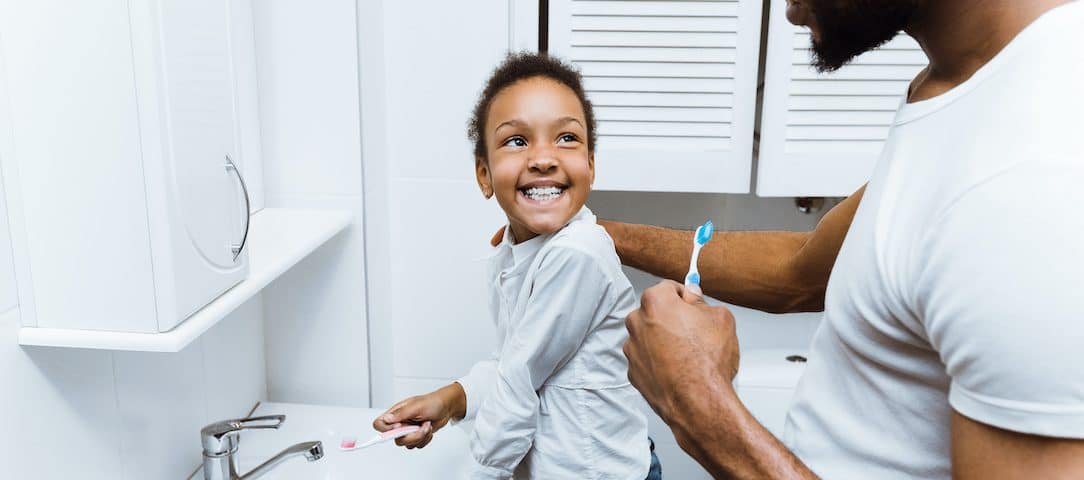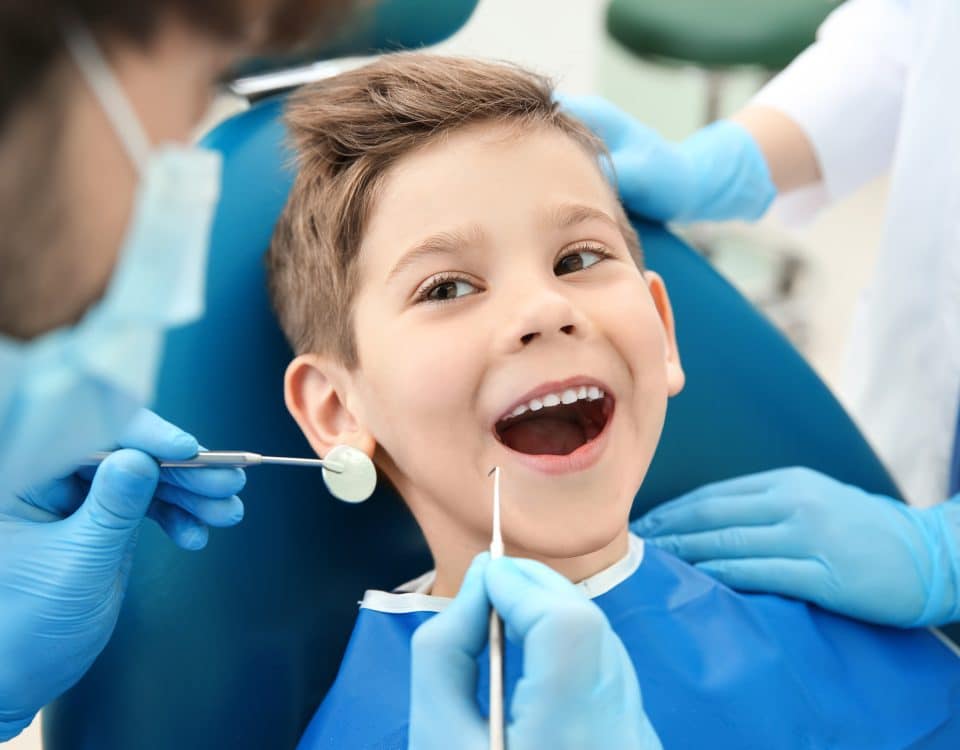The Importance of Caregivers in Children’s Dental Health

Can Adults Correct Crooked Teeth?
January 28, 2021
Are You a Candidate for Dentures?
February 11, 2021The American Dental Association has deemed February National Children’s Dental Health Month. This month is to shine a light on the importance of making sure children maintain healthy smiles from an early age through adulthood. Parents and caregivers are who help ensure that their children have healthy smiles as soon as their first teeth come in. Here is how you, as a parent or caregiver, can help make sure your children have good dental health.
Taking Care of Your Child’s Dental Health
As a parent, you play a critical role in caring for your child’s teeth. The baby teeth, though they aren’t permanent, are still important to keep healthy because they will affect how the permanent, adult teeth come in a few years down the road.
It is important to thoroughly clean your child’s teeth because they are just as susceptible to cavities and tooth decay as adults are. In fact, tooth decay is one of the most common conditions in children — and it’s preventable!
Signs of Tooth Decay in Children
Tooth decay is caused by bacteria in the mouth that can happen when you enjoy certain foods and drinks but don’t thoroughly clean your teeth afterward. The common foods that can contribute to cavities are treats that children love, like soda, candy, fruit juice, cereal, and more. When these kinds of foods combine with bacteria found in your mouth and saliva, it can cause plaque to stick to your teeth. Eventually, this will lead to the enamel of the teeth being attacked, which then causes cavities. Common signs of cavities in children include:
- White spots that begin to form on the teeth in areas affected. These spots mean that the enamel is starting to break down, which can lead to tooth sensitivity.
- A tooth that has developed a light brown color, which is an early sign that there is a cavity.
- The cavity becomes deeper and turns a shade of dark brown.
- Pain in the area around the tooth.
- Sensitivity to certain foods, like sweets or hot and cold drinks.
If you believe your child is showing signs of a cavity, Dr. Kevin Varley here at Stonebrook Family dental will be able to examine your child’s mouth and confirm the cavity and help you move forward with a treatment option.
Preventing Cavities in Children
The good thing about cavities is that they can be prevented, and it all starts at home. As soon as your baby develops their first tooth, they can get a cavity. Starting healthy habits from the first time you see a tooth erupt will lead to maintaining dental health for your child for years to come. Some healthy habits to incorporate in your child’s routine are:
- Cleaning their teeth as soon as they come in.
- Teaching your child to brush twice a day.
- Protect your child’s teeth by using fluoride.
- Feed your child a healthy, low-sugar diet.
- Take your child to regular dental checkups.
Your child should have their first dentist appointment when their first tooth comes in, or when they turn a year old, whichever happens first. Seeing a dentist from a young age has a number of benefits, like making sure your child’s smile is developing properly and preventing potential dental issues from occurring. Further, it also helps get your child comfortable seeing the dentist which can prevent dental fear and dental anxiety when they are older.
How to Care for a Baby’s Teeth
Caring for your child’s teeth starts soon after birth and you will need to supervise their dental routine until they are an older child capable of cleaning their teeth properly by themselves. Mouth Healthy, a blog by the American Dental Association, briefly explains how to care for your baby’s teeth until they are old enough to do it alone:
- Begin cleaning your baby’s mouth a few days after birth by gently wiping the gums with a clean, moist gauze pad or washcloth. When their first tooth appears, you will need to begin brushing their teeth with an age-appropriate toothbrush and a very tiny amount of fluoride toothpaste.
- Continue to brush your child’s teeth twice a day, upgrading their toothbrush as they age. Once they turn three, you can begin using a pea-sized amount of fluoride toothpaste. When your child has two teeth that begin to touch, you will need to also begin flossing.
- While your child is younger than three, you will need to brush their teeth for them, making sure that all areas of the mouth are getting clean and that they aren’t doing anything dangerous, like swallowing toothpaste.
- Once your child is old enough to try to brush their own teeth, continue supervising them and make sure they are brushing all areas of their mouth — not just the teeth they can see in the mirror.
Celebrate Children’s Dental Health Month with Stonebrook Family Dental
Get your child’s dental health started on the right foot during National Children’s Dental Health Month by making an appointment to see Dr. Varley and our team at Stonebrook Family Dental. We’re here for you and your family, no matter how young or old.


